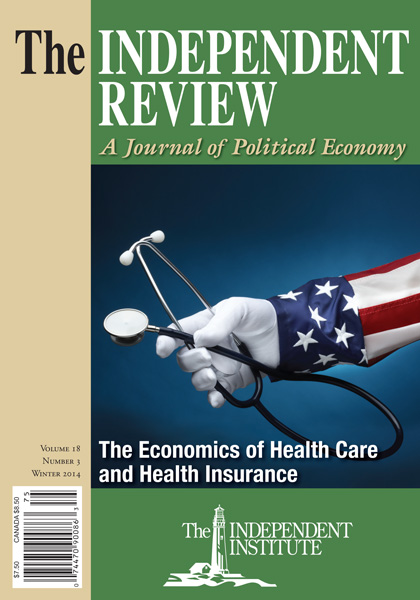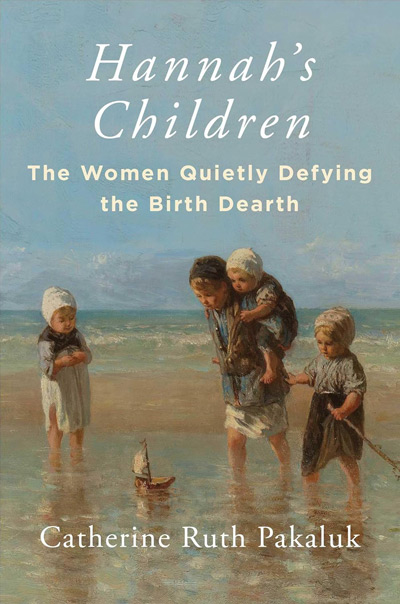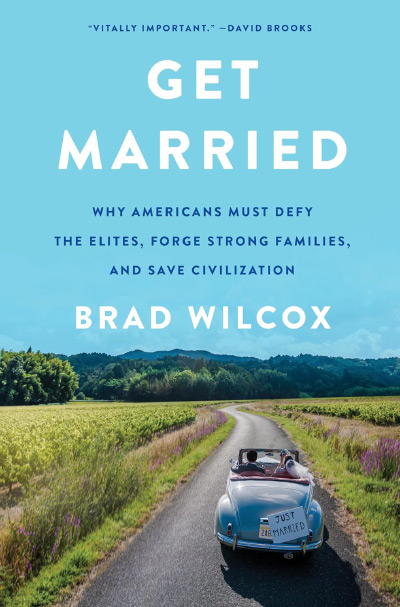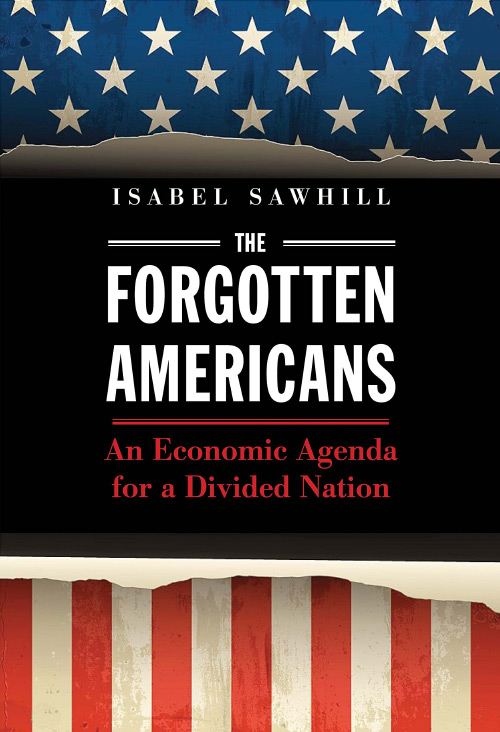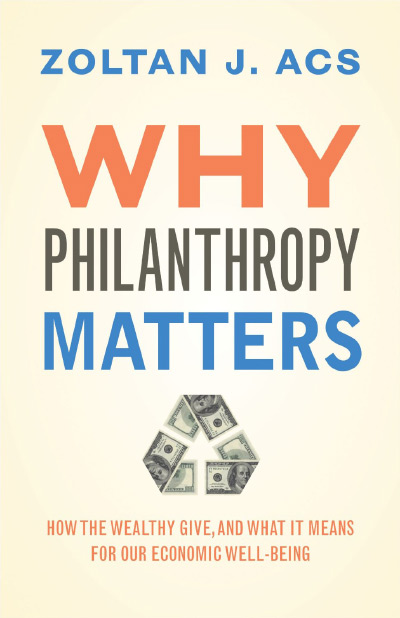In the economics of population, national income per head founders
completely as a measure of welfare. It ignores the satisfaction people
derive from having children or from living longer.
—Peter T. Bauer, “Population Growth: Disaster or Blessing?”
The Independent Review 3, no. 1 (Summer 1998)
Jonathan Last opens What to Expect When No One’s Expecting with a story from his life in the Old Town neighborhood of Alexandria, Virginia. This community is an oasis for young adults with refined tastes and ample income to indulge their tastes: high-end kitchen and food shops, gourmet restaurants, and coffee bars. A children’s clothing shop named “Tutto Bambini” opened in a new cluster of shops but closed after only eighteen months. It was replaced by a doggie spa. Pets abound in Old Town, but there are few children. Residents of Old Town expect to have the next popular food or clothing fashion, but few of them expect the birth of a child.
The Old Town lifestyle serves as a motif for Last’s prophetic warning that the good life as it has come to be defined in modern Western culture—a life of hard work, high income, and expensive play—is not sustainable across generations. This is because these three elements of the good life depend on freedom from the ties and responsibilities of children and family. Thus, the unsustainability Last foresees is rooted in the shrinking size of the next generations and the resulting inversion of the demographic age pyramid. If this lifestyle were confined to a few urban centers, there would be no cause for a prophetic voice. Perhaps if the lifestyle were confined to the rich West, there would not be. But because Western values have spread throughout the world, there is indeed an urgent need for the prophet’s voice.
Last cites demographic evidence of the downward trend in fertility rates for Americans that has persisted virtually since the nation’s beginning. In 1800, the fertility rate for white Americans was 7.04 children per woman. By 1890, it had fallen to 3.87. For blacks, fertility in the 1850s is estimated to have been 7.90 and at the century’s end 6.56. But by 1940 fertility among blacks fell to 2.87 and for whites to 2.22, a little higher than the replacement rate of 2.10. The “baby boom” increase in fertility following World War II lasted roughly two decades. But this was a fertility spike, not a reversal of the downward trend. Overall fertility for American women is currently 1.93. The demographic breakdown of this figure is 1.79 for whites, 1.96 for blacks, and 2.35 for Hispanics. Though fertility of Hispanic women is still high relative to that of black and white women, it too is falling.
Demographers explain the declines in fertility with models of demographic transition. What is referred to as the First Demographic Transition is the population growth that occurred as mortality rates declined beginning in the nineteenth century. Fertility rates declined as well, but less so than mortality. Families eventually became smaller, and adults, with increased wealth, focused on their children’s material needs. The Second Demographic Transition is the further decline in fertility and displacement of children and family with childless adults. This is the transition to a society of no-fault divorce, cohabitation, copulation severed from procreation, and adults’ “higher-ordered needs”—that is, self-actualization. It is this society that Old Town represents.
Last describes the consequences of America’s low fertility in chapter 5, “Very Bad Things.” These very bad things are already happening elsewhere. The picture of the future is far from the ecologists’ romantic image of a smaller population living
in harmony with nature. Without a correction to declining fertility, we can look forward to shrinking cities. Think of Detroits scattered throughout the country. Demand for government services for the aging population will increase as the tax base shrinks. Demand for housing, farm and manufactured products, education, and professional services other than geriatric medicine and eldercare will shrink. Entrepreneurial activity and innovation will dry up, for they are activities of the young. Last delivers his warning with humor, as in his account of the German state’s response to this situation: a program to train prostitutes as eldercare nurses. But, humor aside, the picture he paints is bleak.Human population is one of the more vexing and interesting topics of our time. Population doomsayers—the prophets of overpopulation, many of whom as scholars were trained in nonhuman biology and ecology—have warned nonstop for the past half-century that an overpopulation crisis is imminent. These warnings became imbedded in the consciousness of Americans and international agencies such as the United Nations.
Economists have been ambivalent about whether growth in the number of humans is a blessing or a curse. On the one hand, their institutional memory includes Adam Smith’s explanation that the Scottish Highlanders were poor because population was too low to support trade. It includes as well the classical idea of human labor as the source of value—the more labor, the more value; the more humans, the more labor. And economists in the twentieth century developed the theory of human capital as a complement and a substitute for physical capital and thus a source of value, income, and wealth.
On the other hand, as George Stigler taught us (“Do Economists Matter?” Southern Economic Journal 42 [January 1976]: 347–54), when a bandwagon rolls by, economists are wont to hop on board. As the overpopulation bandwagon got rolling, many economists hopped on. Thus, for instance, Kenneth Boulding wrote in the forward to a new edition of T. R. Malthus’s 1798 book Population: The First Essay (Ann Arbor: University of Michigan Press, 1959) that “the whole purport of the argument” is to show that “the geometric increase of population will soon outrun any conceivable increase in the food supply” (vi). Boulding wrote this despite acknowledging that the context from which Malthus wrote the essay was quite different from that of mid-twentieth-century overpopulation fears. The point of Malthus’s essay was to show that utopian societies stripped of social institutions such as property rights, marriage, and family would be unsustainable. To Malthus, these institutions that enthusiasts for the French Revolution wanted to do away with were what in fact prevented overpopulation.
The entomologist turned ecologist who best represents doomsayers is Paul Ehrlich, author of The Population Bomb (1968), The End of Affluence (1975), and The Population Explosion (1990). Ehrlich’s nemesis was economist Julian Simon, author of The Ultimate Resource (1981) and winner of a famous bet with Ehrlich. Ehrlich’s partners in the bet were physicist John Harte and John Holdren (currently President Obama’s chief scientific adviser and head of the Office of Science and Technology Policy). Simon won the bet when the prices of five natural-resource commodities selected by Ehrlich, Harte, and Holdren fell rather than rose between 1980 and 1990. Though the doomsayers lost the bet, they did not cease their pronouncements of population doom. This particular pessimism about the future of humanity is quite hardy.
Alexandria’s Old Town is more for Last than a symbol of a way of life that is bringing forth a demographic crisis. It also marks out his target audience. Last is writing to those who see the Second Demographic Transition as social progress and is trying to persuade these young urban materialists that they should have babies. He does so in a nonjudgmental way, accepting their presumptions about the good life. This includes the presumption that life in Old Town is better than life in the suburbs and that it is better precisely because the urbanites are not burdened by children. Last highlights the cost of raising a child in chapter 2: “It is commonly said that buying a house is the biggest purchase most Americans will ever make. Well, having a baby is like buying six houses, all at once. Except you can’t sell your children, they never appreciate in value, and there’s a good chance that, somewhere around age 16, they’ll announce: ‘I hate you’” (p. 43). The message here is that the medicine of having a family is bitter, but you’re better off taking it than not.
Last emphasizes that in pointing out the bad effects of the lifestyle his presumed readers choose, he is not judging their choices. “Without passing judgment (you heathen, fornicatin’ sinners!) the rise of cohabitation was objectively bad for the institution of marriage” (p. 64). His attempt to engage affluent materialists on their own terms without offending their sensibilities influences his explanation of how we arrived at the point where “no one’s expecting.” Our predicament is the unintended result of a confluence of historical and cultural contingencies, each of which is arguably good in itself. These contingencies can be grouped under the umbrella of modernization. They include the rise of capitalism with its expanded opportunity and mobility, women’s liberation from the home to the workplace and from teaching jobs to business and the professions, and sexual liberation through birth control and abortion. Last admits to a belief that abortion is wrong but avoids inquiry into the morality of abortion or connections between the birth control mentality and abortion.
He keeps a distance from unseemly elements of the history of sexuality over the past century, merely portraying Margaret Sanger—birth control pioneer, eugenicist, and sexual libertine—as “a weird old bat.” This description marginalizes Sanger with respect to the creation of contemporary mainstream culture. Yet among progressives of her own time, Sanger was not treated as a weird old bat. She was representative of progressivism, and she very much intended to create the kind of society we have today. Along the same line, Last claims (in a footnote) that “the authors of Roe did not believe they were creating a national abortion mill. The inventors of the Pill thought they were making a tool to suppress the fertility of poor undesirables, not the middle class. The lawyers in California who created the modern divorce regime thought they were merely tidying up some clunky statutes. The list goes on and on” (pp. 171–72). Everyone who brought us to where we are today apparently had only the best intentions.
Despite Last’s attempt to appeal to young sophisticates without stepping on their toes, the starkness of his message cannot be overlooked. The chapter “The Bright Side” follows “Very Bad Things.” But the bright side is hardly bright. Immigrants’ higher fertility boosts American fertility, but immigrants soon converge to the lower American norm. Even in terms of successful family planning, the news is not all good. Fifty years on from approval of “the pill” as a pharmaceutical solution to the problem of family planning and forty years after Roe v. Wade, American women do not attain their expected fertility. Women with less education tend to have more children than they expect, and women with more education have fewer.
Last is not optimistic about using financial incentives to increase fertility, although there is an asymmetry here, for he blames financial incentives for contributing to the fertility decline. His solution, if we can call it that, is a return to religious faith and practice. He does not explicitly recommend this return, and religion cannot be turned on and off the way a tax incentive can, but this message is implicit in his account of the direct relationship between religious practice and fertility. “After all, there are many perfectly good reasons to have a baby. (Curiosity, vanity, and naı¨vete´ all come to mind.) But at the end of the day, there’s only one good reason to go through the trouble a second time: Because you believe, in some sense, that God wants you to” (p. 170).
Here again, Last refuses to challenge the Old Town presumptions about the requisites of a good life, that children are burdens rather than blessings for their parents. My guess is that this refusal is a strategic choice that Last made to get his target readers’ attention. But I think the argument would be stronger if Last had explained that God wants us to have children because he knows better than we do what makes us happy; human love trumps material goods.
| Other Independent Review articles by J. Daniel Hammond | ||
| Spring 2024 | Milton Friedman: The Last Conservative | |
| Summer 2022 | Evicitionism: The Compromise Solution to the Pro-life Pro-choice Debate Controversy | |
| Winter 2020/21 | American Conservatism: Reclaiming an Intellectual Tradition | |
| [View All (4)] | ||

